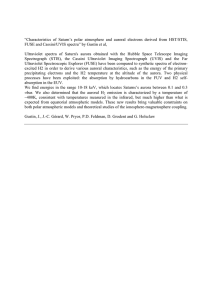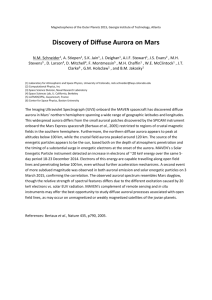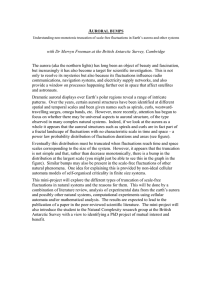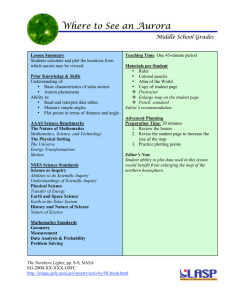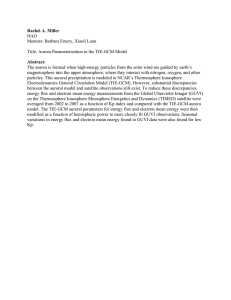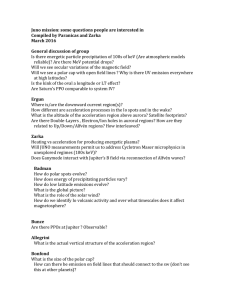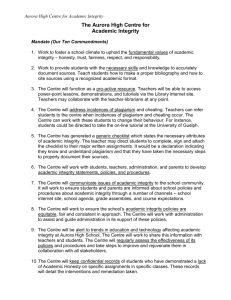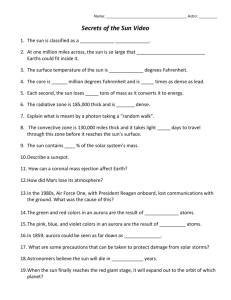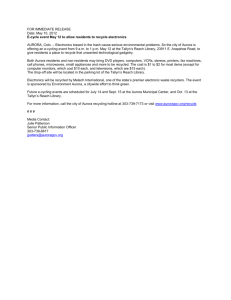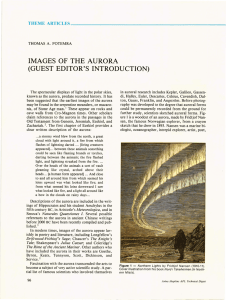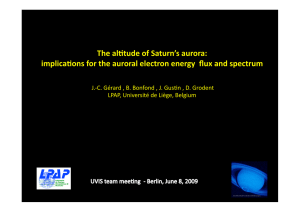FYS 3610
advertisement
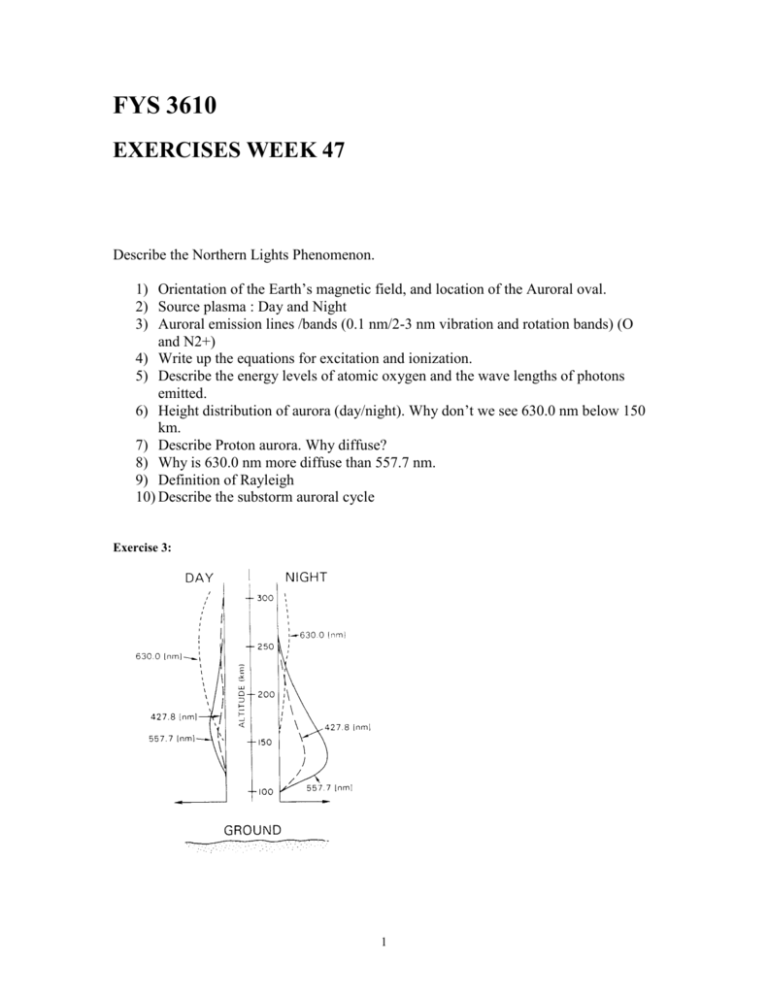
FYS 3610 EXERCISES WEEK 47 Describe the Northern Lights Phenomenon. 1) Orientation of the Earth’s magnetic field, and location of the Auroral oval. 2) Source plasma : Day and Night 3) Auroral emission lines /bands (0.1 nm/2-3 nm vibration and rotation bands) (O and N2+) 4) Write up the equations for excitation and ionization. 5) Describe the energy levels of atomic oxygen and the wave lengths of photons emitted. 6) Height distribution of aurora (day/night). Why don’t we see 630.0 nm below 150 km. 7) Describe Proton aurora. Why diffuse? 8) Why is 630.0 nm more diffuse than 557.7 nm. 9) Definition of Rayleigh 10) Describe the substorm auroral cycle Exercise 3: 1 Figure 3.1 Differences between dayside and nightside auroras versus altitude. a) From Figure 3.1 we notice that 557.7 nm (O1S) and 630.0 nm (O1D) emission intensities peak at different altitudes. Explain this observational feature by accounting for the actual excitation crosssections ( ) given in Table 3.1. Excited state O1S O1D max (m2) 0.25 x 10-21 0.28 x 10-20 Emax(eV) 10 5.6 Table 3.1. Maximum cross-section and corresponding energy at this maximum for the 1S and 1D states of atomic oxygen. b) Why is the 630.0 nm emission completely absent from the E-region. c) Why is the dayside aurora more red-dominated than the nightside aurora. d) Figure 3.2 shows typical altitude profiles of Hall and Pedersen conductivites. Argue why it is reasonable to assume a functional relationship between the ratio I630.0nm / I427.8nm of the auroral intensities and the conductance ratio P/H. Figure 3.2 Ionospheric H(z) and P(z) conductivity profiles. From Kievelson&Russell: Exercise 14.1 Exercise 14.2 Exercise 14.8 2
